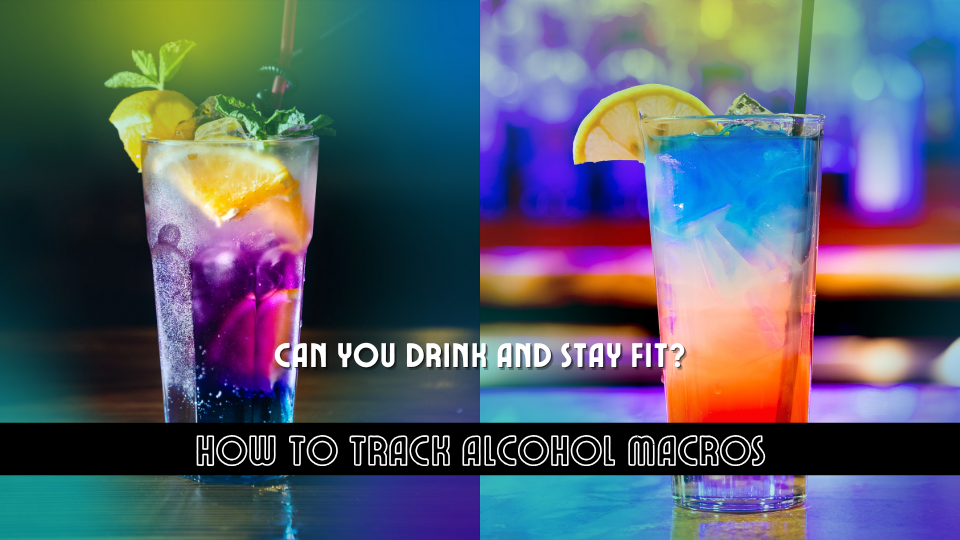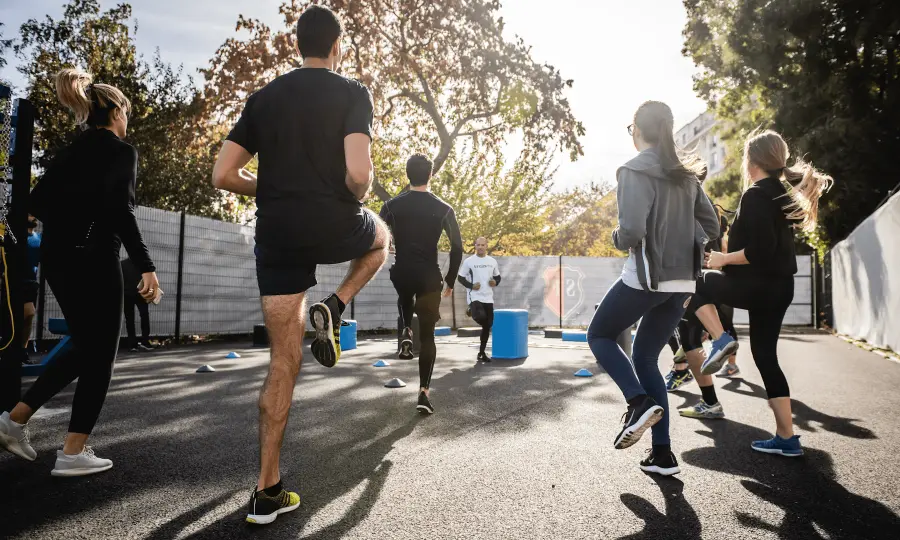For many people pursuing fitness goals, the question arises: Can you enjoy a drink without derailing your progress? The short answer is yes, but it requires an understanding of alcohol’s impact on your body and how to incorporate it into a balanced diet. By leveraging the principles of flexible dieting, such as If It Fits Your Macros (IIFYM), you can enjoy alcohol responsibly while staying on track. At Fit Happens, Pro, we believe in a sustainable, enjoyable approach to fitness that accommodates life’s pleasures, including the occasional drink.
Understanding Alcohol as a Macronutrient
Alcohol, often referred to as the “fourth macronutrient,” differs from proteins, carbohydrates, and fats in that it provides energy without essential nutrients like vitamins and minerals. Alcohol contains 7 calories per gram, making it more calorically dense than carbohydrates (4 calories per gram) and proteins (4 calories per gram), but less dense than fats (9 calories per gram).
While alcohol does not directly contribute to muscle growth or recovery, understanding its caloric value is essential to integrating it into your diet. Treating alcohol as part of your overall caloric intake can help you enjoy it without compromising your fitness goals.
Incorporating Alcohol Into Your Macros
To include alcohol in your diet while adhering to your fitness goals, follow these steps:
Step 1: Determine the Caloric Content
Start by identifying the total calories in your chosen alcoholic beverage. This information can usually be found on the packaging or through a quick online search. For instance, a 12-ounce beer typically contains around 150 calories, a 5-ounce glass of wine has about 125 calories, and a shot of distilled spirits (1.5 ounces) averages 96 calories.
Step 2: Allocate the Calories to Macronutrients
Since alcohol doesn’t fall into traditional macronutrient categories, you’ll need to assign its caloric content to carbohydrates, fats, or a combination of both, depending on your dietary preferences.
- Carbohydrates: Divide the total calories by 4 (calories per gram of carbs) to calculate the equivalent grams of carbohydrates.
- Fats: Divide the total calories by 9 (calories per gram of fat) to determine the equivalent grams of fats.
- Combination: Allocate a portion of the calories to carbs and the remainder to fats based on your dietary flexibility.
Step 3: Track It
Use a food tracking app to log your alcohol intake and adjust your remaining macros for the day accordingly. This ensures that you stay within your calorie goals while enjoying your drink.
Practical Examples of Tracking Alcohol Macros
Let’s take a closer look at how to track alcohol within your macros. For example:
- Example 1: A 5-ounce glass of red wine contains 125 calories.
- Counting as Carbs: 125 ÷ 4 = 31 grams of carbohydrates.
- Counting as Fats: 125 ÷ 9 ≈ 14 grams of fats.
- Combination (50/50): Allocate 62.5 calories to carbs and 62.5 calories to fats:
- Carbs: 62.5 ÷ 4 = 16 grams
- Fats: 62.5 ÷ 9 = 7 grams
- Example 2: A 12-ounce beer contains 150 calories.
- Counting as Carbs: 150 ÷ 4 = 37.5 grams of carbohydrates.
- Counting as Fats: 150 ÷ 9 ≈ 17 grams of fats.
Tips for Responsible Alcohol Consumption
While alcohol can fit into a flexible dieting approach, consuming it responsibly is key to maintaining progress. Here are some guidelines:
1. Prioritize Nutrient-Dense Foods
Alcoholic beverages are calorie-dense but nutrient-poor. Ensure that the majority of your diet consists of nutrient-dense whole foods to meet your body’s nutritional needs.
2. Monitor Recovery and Performance
Alcohol can impair muscle recovery and overall athletic performance. Avoid drinking immediately before or after workouts, as it can interfere with protein synthesis and hydration levels.
3. Hydrate Adequately
Alcohol has diuretic properties, which can lead to dehydration. Drink water alongside your alcoholic beverages to minimize dehydration and its effects on recovery and performance.
4. Limit Consumption
Moderation is crucial. Overindulging not only leads to excessive calorie intake but also impairs judgment, potentially causing you to overeat or skip workouts.
5. Choose Wisely
Opt for lower-calorie alcoholic beverages, such as light beers, dry wines, or spirits mixed with zero-calorie options like soda water.
The Impact of Alcohol on Fitness Goals
1. Body Composition
Excessive alcohol consumption can hinder fat loss or muscle gain due to its caloric content and its potential to disrupt hormonal balance. Alcohol consumption can increase cortisol levels, which may lead to muscle breakdown and fat retention.
2. Muscle Recovery
Alcohol affects the body’s ability to recover from exercise by interfering with protein synthesis. This is particularly important for those aiming to build or maintain muscle mass.
3. Sleep Quality
While alcohol might make you feel drowsy, it disrupts sleep cycles and reduces the quality of rest. Poor sleep negatively impacts recovery, energy levels, and overall performance.
Social Scenarios: Drinking Without Derailing
Social events often involve alcohol, and it’s possible to navigate these situations while staying on track with your fitness goals:
1. Plan Ahead
Before attending an event, estimate your alcohol intake and adjust your macros for the day. For example, if you plan to have a drink, reduce your carb or fat intake during earlier meals to compensate.
2. Stick to Your Plan
Set a limit for yourself and stick to it. Avoid peer pressure to overconsume.
3. Opt for Smart Pairings
Choose drinks that pair well with low-calorie or high-protein snacks to stay satiated without exceeding your calorie goals.
4. Alternate Drinks with Water
For every alcoholic beverage, drink a glass of water. This helps slow down consumption, reduce calorie intake, and stay hydrated.
Fit Happens, Pro: Helping You Navigate Alcohol and Fitness
At Fit Happens, Pro, we believe that fitness should be flexible and enjoyable. Our personalized nutrition plans allow for the inclusion of alcohol while ensuring that you remain aligned with your goals. Here’s how we can help:
- Customized Macronutrient Targets
- We calculate your macros to accommodate occasional alcohol consumption without compromising progress.
- Guidance on Tracking
- Our experts provide step-by-step instructions on how to accurately track alcohol macros.
- Education on Smart Choices
- We offer resources and tips to help you make informed decisions about your drink choices.
- Accountability and Support
- Our team is here to provide support and keep you accountable, ensuring that your fitness journey remains on track.
Conclusion
Incorporating alcohol into your diet doesn’t have to derail your fitness journey. By understanding its caloric value, tracking it accurately, and practicing moderation, you can enjoy the occasional drink while staying aligned with your goals. At Fit Happens, Pro, we’re here to help you embrace a balanced and sustainable approach to fitness, proving that you can have fun and stay fit.




